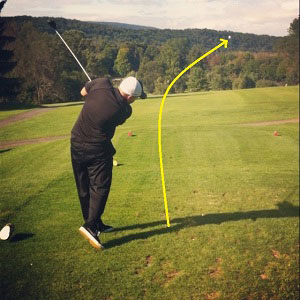
You can improve your chances of hitting 80 by practicing more from short tees. This will increase your confidence and mental toughness. To improve your golf swing and practice your putting, it is a good idea to play at different times of the day. You have to be aware that there are many things that can influence your score. If you have a good mental attitude, you should be able to shoot lower scores if you have to.
Bunker play improvement drills
Players make the most common error when hitting a bunker shot. They don't accelerate through impact. The result is that the ball ends up less than one foot out of the bunker, and they have to follow through for a while. Practicing hitting a practice shot with your left foot, keep it flat in the sand, and raise your right heel off the ground, will help you achieve this goal.
Amateur golfers are known to miss the ball too much behind the ball. They either hit the ball too far, or too far back, and the ball stays in the sand, or they hit the ball too short, which causes it to fly over the green. It is best to hit the ball slightly behind the ball to prevent this from happening.

Mental game
To improve your mental game and break 80, trust your instincts. Although skills are important in golf, intuition is just as important. Trust your right brain and let it control your left. Instead of worrying over technical issues, think about what you can do well. If you are able to change your mindset and organize your mind in a more efficient way, your chances of making it to the top of the golf world can be increased.
Focus on hitting the green in one direction when practicing. If the shot was in one direction, it might be easier for you to make up the difference. Negative thoughts can make it harder to break 80. Remember that golf is supposed be fun. If you want to break 80 in golf, don't let the quest to break 80 get in your way of enjoying the game.
Implementing the practice
Putting practice is the key element to improving your golf game. When playing, you must make several crucial decisions. This will help you to anticipate problems and be able to resolve them quickly. Your chances of being stumped on the course will be reduced by practicing your short and putting skills. Practicing putting on a practice green is a great way to improve your short game and putting.
A good warm up routine doesn't need to be lengthy. Spend ten minutes on your warm up before you start your round. Before you swing your first shot, it is important that your muscles are activated and loose. It will help you to get used to the speed of the green by spending some time on it. If you're a professional golfer looking to break 80 it is important to spend a few extra minutes on the green.

Manage your emotions
For optimal performance, it is important to manage your emotions when playing golf. Research has shown that emotion intelligence has a positive effect on performance in a number of areas. Golf is not an exception. It is possible to develop emotional intelligence. This article will explain how to use emotional intelligence to improve your playing. Learn how to manage emotions while playing golf. To maximize your enjoyment and your results, it is important to manage your emotions while playing golf.
The purpose of your golf game is an important part of self-management. It is possible to manage your emotions so that you can focus on a particular goal and follow the correct path. You need to have a plan, and not rush your thoughts. You should also be aware of physiological conditions that could impact your performance, such a hypoglycemia, chronic fatigue, and hormone imbalances.
FAQ
What is a PAR?
Par is the number needed to complete an 18-hole hole. By adding up each player’s individual scores, the total score can be calculated.
You can play 18 holes during a round. Each hole is assigned a rating. The hole with the highest rating is "par 3". It is located three strokes from hole. The lowest rated hole is called "par 5''. It's five strokes from it.
What skills do I need to play golf well?
No. All you need are a pair walking shoes, towel, and a couple of clubs.
What are the different types of golf courses?
Golf courses come in all shapes and sizes. Some courses are made for beginners, others for more experienced players.
Some golf courses are close to lakes, rivers, mountains and forests. Others are situated in urban areas. You will find everything from public golf courses to private estates.
How can my game improve?
There are many options to improve your golf game. You can join a group that plays golf. A club is a place where you can get together with other golf enthusiasts and learn new skills.
Equipment such as balls and clubs can be purchased. These items will allow you to improve your game.
Finally, you could study books on golf. A deeper understanding of the game's rules and regulations can be gained by reading about it.
How often should you play golf?
It all depends on your time. However, most people recommend practicing two times per week.
You should aim to play at least four times a week if your goal is to become an expert player.
Statistics
- Buying a set of Titleist or Taylor-Made irons for nearly $1,000 is simply not necessary and likely a waste of money. (golficity.com)
- He shanked the first attempt, but it is estimated his second went more than 200 yards (180 m).[52]Golf courses worldwide. Below are the top 20 countries with the most golf courses as of 2019.[53]CountryNumber of (en.wikipedia.org)
- In the United States, the number of people who play golf twenty-five times or more per year decreased from 6.9 million in 2000 to 4.6 million in 2005, according to the [51] (en.wikipedia.org)
- Professional golfers typically make between 60% and 70% of greens in regulation. (en.wikipedia.org)
External Links
How To
How to Hit the Straightest Golf Ball
One of the most discussed topics in history has been how to hit the ball straight. There have been many methods to achieve the desired result. These include hitting the balls with a club, throwing them at the target, or even using your bare hands to hit it.
First, you must know how to hit the ball. Next, learn how you can choose the right tool to do the job. Finally, you must practice swinging the club correctly. Once you master these three steps, you'll be able to use them to hit the ball straight every time.
Practice is all about hitting the ball squarely. That means you must hit it exactly at the spot where it should be. You can cause the ball to veer off track by hitting it too high or too low.
This simple trick will help you hit the ball well.
-
You should grip the club securely. You should find your grip comfortable but firm enough to hold the club in place.
-
Your stance should be set. When you stand over the ball, your feet should form an "L" shape. Your body weight should be evenly distributed between your legs.
-
As fast as you can, swing the club back-and-forth. Stop when the clubhead reaches its highest point. This motion should be repeated until you complete one revolution.
-
Only move the ball's centre. Keep the club from moving to one side.
-
Keep the clubface parallel to the target line. Maintain the clubface parallel and level with the ground.
-
Make sure you make contact with it. Don't strike the ball too softly.
-
The sweet spot should be about halfway between the top of the ball and the bottom. This will ensure the ball flies true.
-
If you are using a driver aim for the middle fairway. If you're using a driver, aim for middle of the fairway with a long iron.
-
Try your technique on a small target like a brick wall or a tree trunk.
-
After several months of consistent practice, you should begin to see improvements in your game.
-
Learn new skills and play better golf.